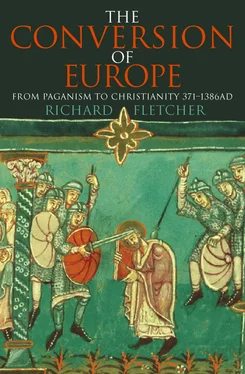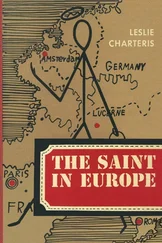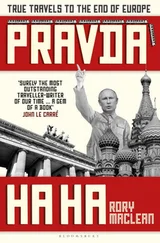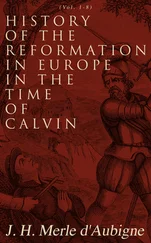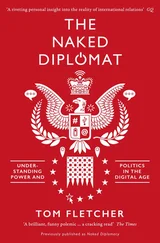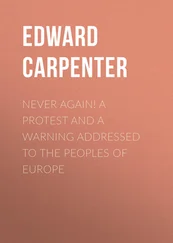The coming of Christianity to Northumbria in the seventh century prompts questions which may serve as some kind of informal agenda for enquiries which will range more widely in time and space.
First, there is the problem of the apostolic impulse. It is observable that in the course of Christian history churchmen have been now more, now less concerned with spreading the faith. Why did Pope Gregory I decide to send a mission to convert the English to Christianity? What was it that took Patrick to Ireland, or Boniface to Germany, or Anskar to Sweden, or Cyril and Methodius to Moravia?
Second, there are the evangelists like Paulinus to be considered. Who were these activists who engaged themselves in the work – the toilsome, often unrewarding, sometimes dangerous work – of missionary preaching? What sort of previous experience or training had they had? What models or precedents guided them, what ideas about strategy and tactics?
Third, there is the missionary ‘target’ or ‘host society’, in this instance a warrior king and his household of military retainers. Was it a condition of successful evangelism in early medieval Europe that missionaries worked through and with the secular power? Who indeed were identified as the potential converts – individuals or groups; central people or marginal people; men or women or children; kings, noblemen, farmers, merchants, craftsmen, labourers, slaves, prisoners of war or what-have-you; settled, nomadic, intermittently mobile, or displaced people?
Fourth, there are the expectations of the potential converts, founded in their experience of the traditional religion in whose observances they were brought up. What did they expect of it? It has already been pointed out that we know little of Germanic paganism. The same may be said – must be said, indeed, and the theme is one that needs regular sounding – of Celtic, Scandinavian and Slavonic paganisms. But of one thing we may be reasonably confident. The rich diversity of pre-Christian cults with which evangelists had to contend shared a core of what sociologists of religion like to call ‘empirical religiosity’. That is to say, the belief that proper cult brings tangible reward in this present world, in material benefits like health, prosperity, success or fame, as well as in whatever Hereafter traditional religion might have envisaged. Edwin wanted victory in battle, glory and treasure and power and the continuing loyalty of his retainers. Others of less exalted status would have had different hopes and expectations: enough food to see the family through the winter, murrain-free cattle, cures for sickness or disability, a good husband or wife, successful trading, deliverance from shipwreck, release from enchantment, protection against evil spirits, the death of an enemy, revenge, freedom, a return home. How could widely differing hopes and fears be satisfied?
Fifth, there is the question of the communication of the message. How did evangelists set about the business of putting over the faith and its associated standards of conduct to potential converts? For a start, what language did they use? For Paulinus the vernacular of every day in his native Italy was Latin; for Edwin it was a Northumbrian dialect of Old English, a Germanic language having its closest counterpart in the Frisian coastlands of north Germany. When Edwin’s mysterious nocturnal visitor spoke to him of ‘salvation’, what Old English word or phrase might he have used? How did missionaries render key Christian concepts in the vernacular – ‘sin’, ‘regeneration’, and so forth? Most important of all, what word did they choose to render ‘God’, and what cluster of associations might it have had for their converts?
Sixth, there is the delicate problem of the adaptability of the message. How much elasticity or ‘give’ did missionary Christianity have in an early medieval context? What compromises or adjustments did evangelists have to make, and with how much heart-searching? How and where were the limits drawn between what was tolerable in traditional belief and practice and what was not? To what extent could or did Christian activists try to change traditional custom – in respect of, say, marriage, penal practice, the disposal of the dead, warfare, blood feuds, slave-trading?
Seventh, there are the differing patterns of acceptance. What did the new converts make of the new faith and its demands? What models of Christian living were presented to them? How, if at all, was Edwin different (to human eyes) as man and as king after Easter 627 from what he had been before? Bede tells us that subsequently Paulinus spent thirty-six days at King Edwin’s royal residence at Yeavering (in present-day Northumberland) engaged in non-stop baptism in the nearby river Glen of all who flocked to him. What did they think had happened to them? Do we have even the faintest shadow of a chance of finding out? How much of a leap into the unknown was conversion, how high a hurdle? Were converts required to abandon all, or some, or hardly any of their previous customs, rituals or taboos?
Eighth, there is the consolidation that has to follow close upon the initial acceptance and conversion, the process by which a mission becomes a church. How did a structure of ecclesiastical government come into being in the mission field, and in what respects did it differ from the Mediterranean model whence it derived? Why were such enormous numbers of monasteries founded in newly converted regions such as seventh-century England or eighth-century Germany? How were cathedrals and monasteries endowed, and what implications might this process have had for legal notions about the ownership and transfer of property? How did parishes come into existence? What positions were taken up on such potentially controversial matters as the formation of a native priesthood, the role of women within the young churches, the imposition of dues such as tithe upon the new converts, the translation of Christian scriptures into the vernacular? What was to be the architectural form and the constructional technique of new church buildings? Could ‘native’ art become ‘Christian’ art?
Ninth, and almost finally, there are the cultural consequences of conversion, already glanced at. We do not know exactly where Edwin’s wooden chapel stood, though there is some likelihood that it was in the pillared square of what had once been the praetorium or headquarters building of the Roman fortress at York. Excavation has shown that this enormous and imposing structure was still standing in Edwin’s day. If this supposition about the siting of York’s earliest Anglo-Saxon cathedral is correct, Edwin’s baptism at the hands of an Italian missionary bishop took place in an unambiguously Roman architectural setting. Bede tells us that Edwin used to have a standard of Roman type carried before him. He quotes papal letters which addressed Edwin with exalted Latin titles, ‘glorious king of the English’, ‘most excellent and surpassing lord’. To Bede it was clear that there was something Roman about Edwin’s kingship after his conversion. Whatever the reality might have been, from Bede’s angle of vision the perception was a just one. Within little more than a century of Edwin’s death the cathedral school at York had become the most important centre for the study of Christian and classical learning in western Europe. Among others it educated Alcuin, that early example of the brain-drain who, head-hunted by Charlemagne, king of the Franks, was the architect of that revival of literature and learning under royal patronage, the so-called Carolingian renaissance, which was the threshold to the cultural achievements of western Christendom in the Middle Ages.
These are all questions to which answers may be found – however hesitant or provisional, however swaddled in circumlocutory cautions our formulations may need to be – in the meagre sources which are all that have come down to us from a remote epoch. The tenth and last question on our agenda is the most perplexing because it was never specifically addressed in our sources. It is no more and no less than this: What makes a Christian? At what point may one say of an individual, or a society, ‘He (or she, or it) has become, is now Christian’? If the saving grace imparted by baptism makes the Christian, then the hundreds of Northumbrian farmers and their families dunked in the waters of the river Glen by Paulinus were indeed made Christians in the course of those thirty-six days. It is a sound sacramentalist point of view. Was it enough for Paulinus? Was it enough for Bede? As it happens, we know how Bede would have answered that question. His requirements for right Christian living were rigorous. To investigate what more beyond baptism might be required is to discover that the question ‘What makes a Christian?’ was very variously answered in the span of place and time embraced by this book. Being a Christian was obviously a rather different operation for Pope Gregory I than it was for King Ethelbert of Kent. Being a Christian in seventh-century Northumbria was not the same as being a Christian in twelfth-century Northumbria (or, for the matter of that, in sixteenth- or twentieth-century Northumbria). Conversion could mean different things to different people at the same time. What was required of the convert could vary as circumstances or tactics or the pressure of time or the level of moral resources also varied. Investigators will choose diverse indicators of Christianization and frame judgements accordingly. For the historian the study of early medieval conversion can be bewildering; a game played in swirling mist on a far from level playing field in which unseen hands are constantly shifting the dimly glimpsed goalposts.
Читать дальше
